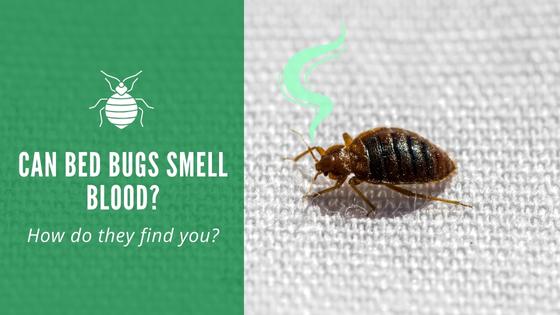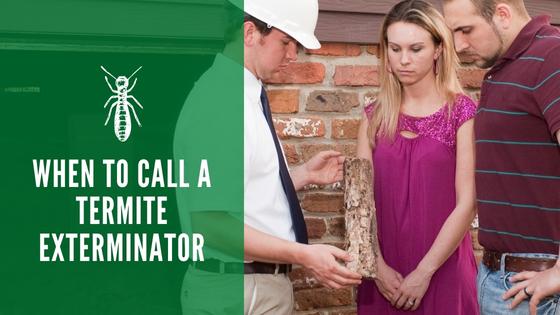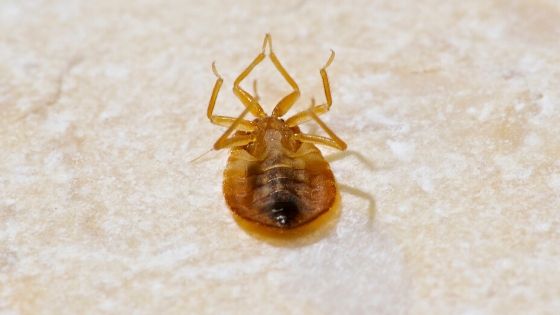Termites Vs. Bed Bugs
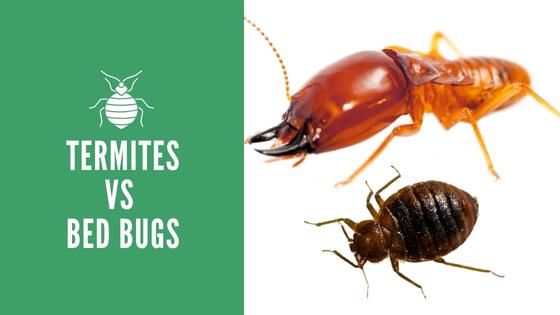
The discovery of bugs in your house is likely to send you diving deep into the world of insect identification. Both bed bugs and termites are among the most problematic types of insect infestations to experience, but they each pose different risks to your property and health.
Telling termites and bed bugs apart isn’t too hard once you know a few basic facts about their appearance and lifestyle.
Termite Vs. Bed Bugs Appearance
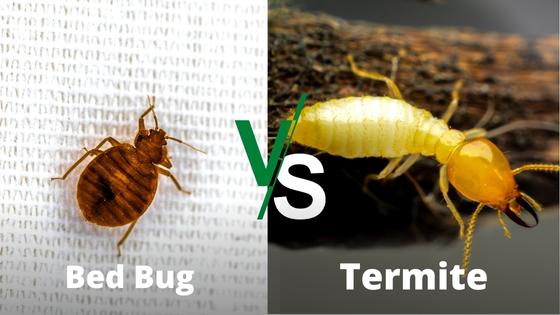
The easiest way to identify an insect is by its features. If you’ve found a bug, then taking a moment to check it out is the best way to figure out which type of infestation you are dealing with today.
Termites are typically larger than bed bugs. A worker termite is around one-fourth of an inch, although queens can reach over an inch in size. Bed bugs are usually less than a quarter of an inch long, with babies sometimes barely detectable to the human eye.
A termite’s body is also rounder and more elongated in appearance. They are more likely to be confused with ants rather than bed bugs.
Alternatively, bed bugs tend to have a flatter body shaped like an oval. People sometimes say that a bed bug looks like an apple seed.
Depending upon the time of year, termites might also have wings. During the mating season, reproductive termites grow wings that they shed once this time of the year is over. Bed bugs never have wings, and you’ll never see them fly.
Termite Vs. Bed Bugs Diet
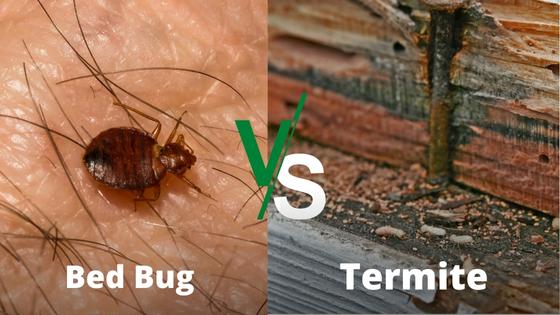
Termites and bed bugs have very different diets. Termites prefer to eat cellulose, which comes from wood, grass, cardboard, cotton, and other similar types of material. Usually, termites prefer to eat the wood that is used in the structure of a building since it tends to be located in places where they can easily get to and from their colonies.
Can Termites Be in Your Bed?
Termites may occasionally invade your bed and other furniture pieces out of a desperate need for food. Mattresses, bed frames, and other furniture parts could contain cellulose materials, which might draw termites out of their hiding places.
Remember that this is rare, and this situation usually only happens when your bed is set up near an active infestation somewhere else in your house. For instance, a termite might exit through a crack in your wall to access your bed if they’ve been living inside the building’s walls.
If you have a bad enough infestation of termites, you might find evidence of them chewing through your furniture. Termites leave behind wood-like droppings called frass formed from their woody diet. Small holes bored into the wooden materials that make up your furniture are another sign that there might be termites invading your sleeping area and not bed bugs.
Bed Bug Diet
A bed bug’s diet is just as disturbing as the thought of termites eating through your home and damaging the primary structural posts. Bed bugs feed on human blood, which means you could serve as their nocturnal snack.
If you have a bed bug infestation, you might notice bites on your skin when you wake up. Bed bugs can also leave behind specks of blood or fecal matter that look like little dark spots on your bedding.
How Long Do They Live?
A termite usually only lives for one or two years, but the colony’s queen might survive for decades provided she has the right living conditions. If a termite colony cannot obtain enough food for its needs, it’ll usually die quickly.
Keep in mind that termites tend to build a colony where they know they’ll have a steady supply of cellulose. There’s a reason why they’ll opt for a house rather than a tiny woodpile in the wild.
Bed bugs usually live for about ten months to a year. Most bed bugs will feed every couple of days, but you might notice new bites with a large infestation every morning.
Simply leaving for a few nights won’t work for killing these bugs, either. A bed bug can survive for up to a year without a single feeding.
Termite Vs. Bed Bugs Dangers?
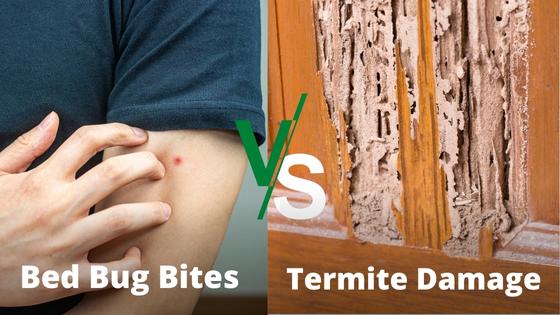
Termites don’t typically bite humans since they don’t care to feed on your blood. Nor do they bite people as a defense mechanism. While that might make you feel safe, you’ll want to know that they pose a serious danger of property damage in your home.
As termites bore through wooden parts of the structure, they can cause severe enough damage that the roof, walls, or floors cave in. Termites can eat through thousands of dollars worth of wood quickly, leading to costly repairs after the infestation is gone.
In a severe infestation, you could also face additional health risks. Once the termites cause enough damage, water could leak through the holes they create, leading to mold growth. Other pests may also use termite damage as an easy route to your house, and rodents, roaches, and other critters can carry serious diseases that are transmittable to humans.
Bed bugs pose more of an immediate health risk to humans. While they aren’t known for transmitting disease, they can cause you to develop infections at their feeding site on your skin. Infections usually occur if you scratch your skin due to itchy bites.
Some people can also have allergic reactions beyond just dealing with annoying itchiness. Anaphylactic shock is possible if you have severe allergies. People also tend to experience mental health issues, such as anxiety and insomnia, arising from the thought of having bugs feed them at night.
Termite Vs. Bed Bugs Treatment
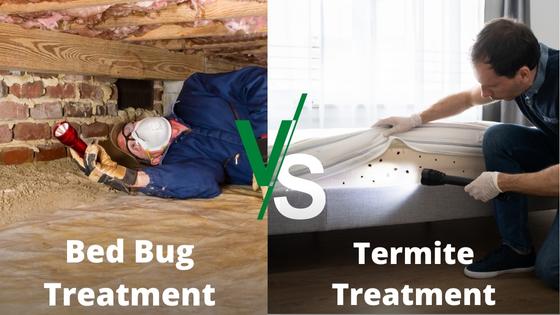
Neither bed bugs nor termites belong in your home. Although the treatment options are different, they are all very effective at eliminating pests when a professional uses them in your home.
For termites, an exterminator may need to apply a soil-based treatment for subterranean types that travel from their colony to your home using underground tunnels. They may also use injectable pesticide applications that can penetrate the walls of your home where termite colonies exist.
Spraying is another option for eliminating termites, and your exterminator may also recommend removing infested building materials once the primary treatment is complete.
Professional pest control technicians can also choose from several types of bed bug treatments. While spraying can kill bed bugs, they may be more likely to recommend using heat treatments.
Bed bugs can’t survive high temperatures for very long, and heating a room helps to reach tiny ones that might be lurking in small cracks around the room. Heat treatment can also help you salvage your furniture and other materials without cleaning them excessively to remove pesticide residue.
Since both types of pests require different kinds of treatment, trying to make this a DIY project could cause the infestation to continue if you cannot properly identify which bug is invading your space.
Always make proper pest identification a priority, and remember that early detection and treatment is the best way to salvage your property and protect your health.

